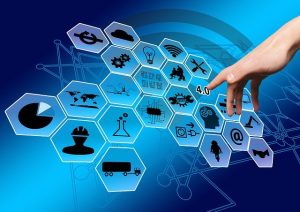 The Internet of Things is one of the most promising sectors of technology and business in the world. So much so that the next “industrial revolution” has been proclaimed and various data and statistics companies have estimated that by 2020 alone there will be more than 30 billion devices connected to the network and more than 75 billion by 2025.
The Internet of Things is one of the most promising sectors of technology and business in the world. So much so that the next “industrial revolution” has been proclaimed and various data and statistics companies have estimated that by 2020 alone there will be more than 30 billion devices connected to the network and more than 75 billion by 2025.
What is the Internet of Things?
The Internet of Things (IoT) is nothing more than the connection of objects to the Internet with the intention of transmitting the data that they have collected in real time (usually through sensors) to analyze performance or the behavior of something or someone. Hmm, maybe it doesn’t sound so novel or attractive, but …
Imagine a world where, while you are sleeping, you have a bracelet that monitors your sleep cycles. When you’ve had enough sleep, the bracelet gently wakes you up with a sound or vibration and prompts your coffeemaker to automatically start working .
 You prepare for your day, you take your toothbrush and while brushing this object has detected that there is a risk of you having a cavity, so having this information has decided to make an appointment with your dentist and has informed you of it with a notification on your phone. You go to the kitchen, you drink your freshly brewed coffee and you realize that you have another notification, but this time from your refrigerator that asks you if you want to buy the food on the list it has made because the food inventory is about to run out. Sounds a bit futuristic and far-fetched, doesn’t it? But would you believe me if I told you that some of these objects already exist today?
You prepare for your day, you take your toothbrush and while brushing this object has detected that there is a risk of you having a cavity, so having this information has decided to make an appointment with your dentist and has informed you of it with a notification on your phone. You go to the kitchen, you drink your freshly brewed coffee and you realize that you have another notification, but this time from your refrigerator that asks you if you want to buy the food on the list it has made because the food inventory is about to run out. Sounds a bit futuristic and far-fetched, doesn’t it? But would you believe me if I told you that some of these objects already exist today?
You should know that the concept of IoT is not new. It was proposed by Kevin Ashton in 1999 when research on radio frequency identification (RFID) was being conducted at the Massachusetts Institute (MIT) , but it was not until the last decade that the possibilities of implementing the Internet began to emerge. of Things and this is because, in the past, technology was very expensive to develop. However, with the reduction of costs and the emergence of aspects such as cloud-based services, these prices have been reduced dramatically, generating a growing interest in this market and marking it as one of the most important in the coming years.
At present this technology has been applied even in agriculture . In farms and fields they have installed wireless sensors capable of transmitting data on soil moisture and its nutrients to agricultural experts, allowing them to optimize the use of fertilizers and act to improve planting conditions.
…



